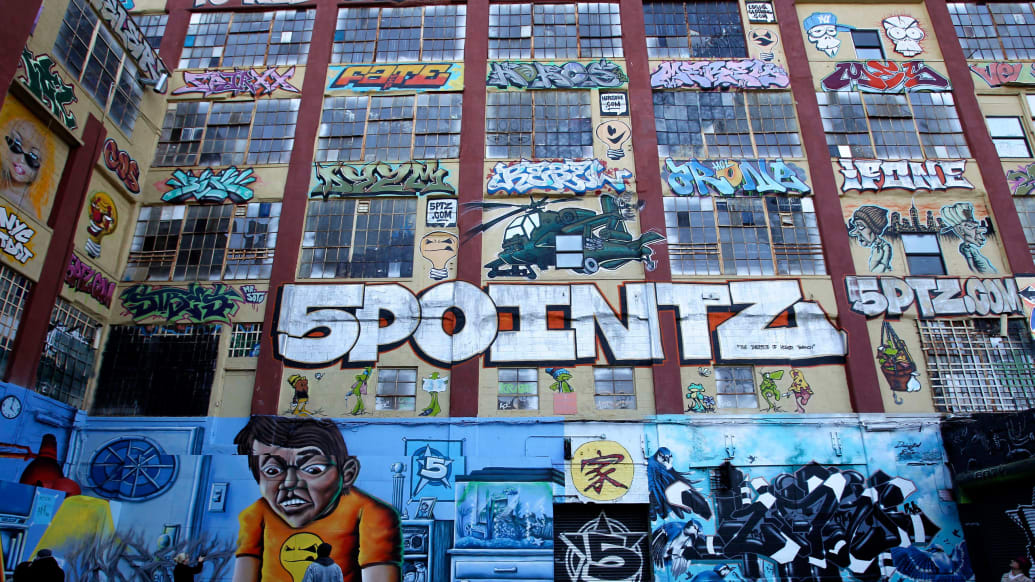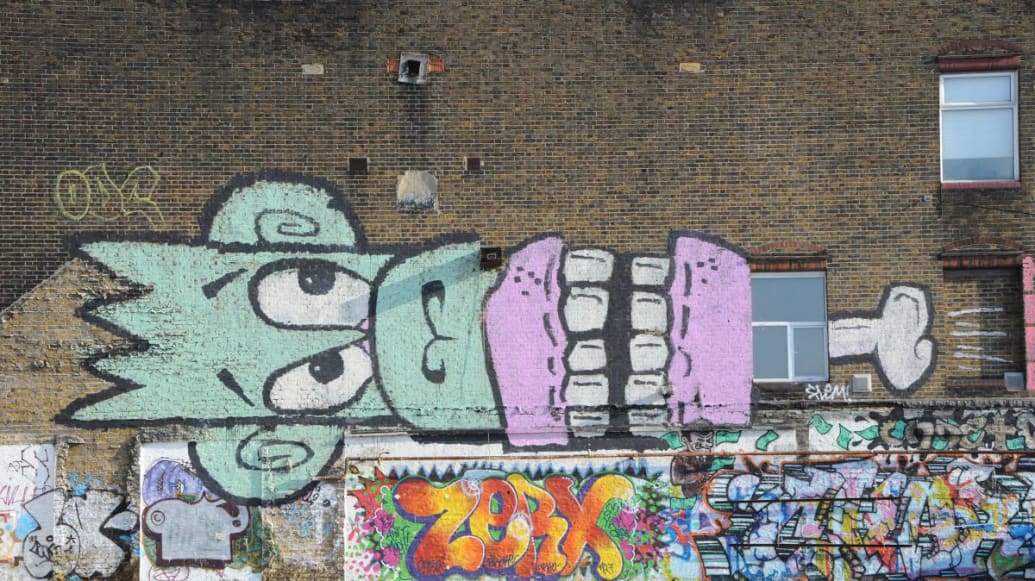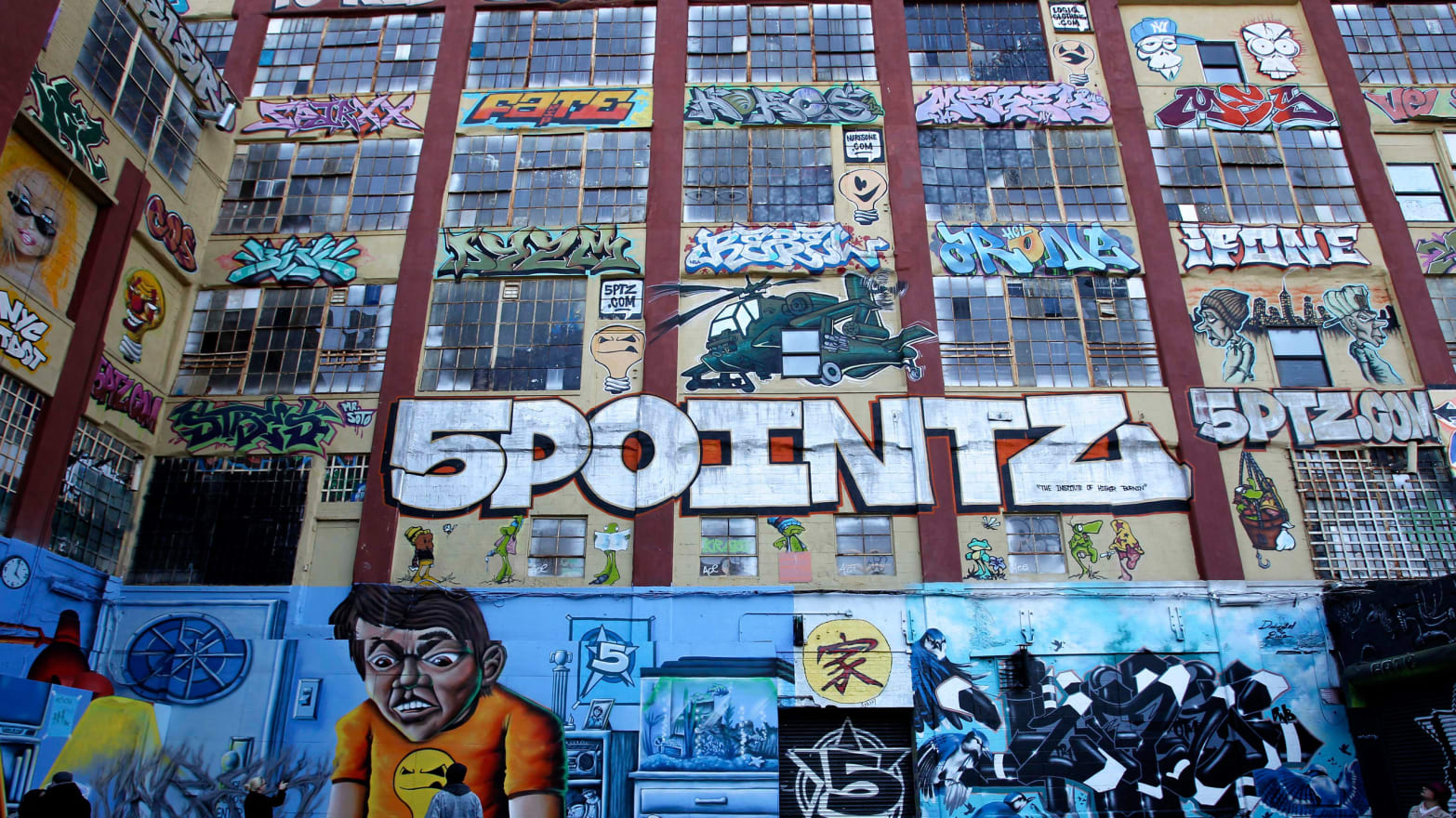As night falls around the world, artists slip into stealth gear and hit the streets equipped with proper tools to leave their mark on the vacant walls that wait. Overnight, a graffiti masterpiece is born.

But as seen with 5Pointz—a legendary graffiti Mecca in Queens, New York—which was whitewashed suddenly last November, street art can vanish as quickly as it appears. Which is why, last Tuesday, the Google Cultural Institute launched Street Art Project, aiming to preserve the transient works by the likes of Shepard Fairey, Phlegm and Banksy.
Viewers can refine the database of over 5,000 images by artist, location and genre, among others, to find niche albums, such as New York walls of the 1990s. The collections span from the walls of Bogota to the streets of Kenya, and from the Philippines to Sweden, showcasing both public and private works as well as those that no longer exist, including 5Pointz.
According to Lois Stavsky, the co-curator of the 5Pointz gallery, the project “makes street art and graffiti accessible to many folks who might otherwise dismiss it—without knowing anything about it.”
So far, the Museum of the City of New York, the Dallas Contemporary exhibition space in Texas, Living Walls: The City Speaks in Atlanta, and Museum of Street Art in France have created online galleries for Street Art Project, showing just how the art form is evolving from being simply viewed as “vandalism.”
The Museum of the City of New York’s albums include Beyond Banksy: Not Another Gift Shop, which allows visitors to navigate the streets of London to view the works of C215, Invader, Phlegm, Swoon and many more, while receiving informational tidbits on the artists, their works and the context that links them together.
Many famed artists have already voiced their support for the project. Shepard Fairey, who created the iconic “HOPE” image during President Obama’s 2008 campaign, told the New York Times that he’s “always used [his] street art to democratize art, so it would be philosophically inconsistent for [him] to protest art democratization through Google.” Belgian artist ROA agreed “as long as they credit the mural to me, and it’s not being used for commercial purposes or corporations.”
RELATED: Graffiti around the World: Google Cultural Institute's Street Art Project

The Talking Walls of Buenos Aires explores “a tradition of art, activism and popular expression” from 1983 to 2013. The curated selection of works travels throughout the political and economic history of Buenos Aires with an emphasis on how public art helped facilitate better conditions for its citizens.
Street art admirers are also encouraged to contribute to the growing collection. Along with the ability to create “User Galleries,” the Institute is also pulling photos adorned with the hashtags #StreetArtProject and #GraffitiArt from Google Art Project’s growing band of 8.5 million Google+ followers.
In recent years, street art has been included on galleries’ walls. In 2011, the Los Angeles Museum of Contemporary Art hosted an exhibition titled “Art in the Streets,” that fueled a “40-year dispute about the nature of graffiti and the appropriateness of a mainstream arts institution…conveying legitimacy on an activity that some people see as nothing short of vandalism.”
Late last year, the elusive street artist Banksy held a month-long residency in New York City, which generated much buzz among the city’s citizens and its officials. While many locals and tourists were traversing the city streets to find the latest additions, then-Mayor Bloomberg and the NYPD made it a priority to catch the unidentified artist, as they viewed the “vandalism” as a “loss of control.”
Launched in 2011, the Google Cultural Institute, which includes Art Project and the World Wonders Project, allows public, online access to a plethora of museums, cultural institutions and world heritage sites—such as Stonehenge and the Great Barrier Reef—around the globe to anyone with an Internet connection.
“It’s not about putting up a website and a little bit of content,” Amit Sood, director of the Google Cultural Institute, told Newsweek. “We’re talking about really immersive experience with zooming technology on assets and objects that have never really been seen in that light online. We’re talking about digital exhibitions created by curators for the very first time.”
In an attempt to avoid any legal woes from artists, the institute will only accept images submitted by organizations with a contract verifying their ownership, instead of pulling from their already existing Street View database. If at any point an artist refuses to be represented, the institute will cooperate in the removal of their works.

